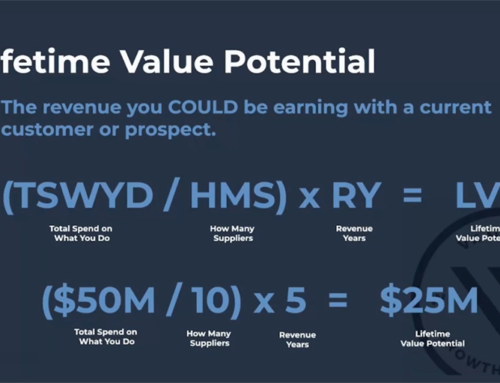The modern buyer persona presents an opportunity for companies to grow like never before. Traditional selling techniques coupled with digital prospecting allows any company to sell on a regional, national and international scale.
That said, the modern buyer is juggling 10x the communications they were handling just a few years ago. Phone calls, emails, text messages, Facebook Messenger, LinkedIn messages, Slack, Twitter…the list is long and ever expanding. All these communications channels create an immense amount of noise in buyers’ lives, and cutting through that noise requires focus, precision messaging, process and persistence.
The Prospecting Process
Even if your prospect NEEDS your products or services, you’re constantly fighting the noise of modern communications. B2B sales industry research indicates it takes an average of 8 “touches” to generate engagement and progress a prospect forward into your sales funnel or out to disqualification. One trick to cutting through the noise is to create a sense of urgency in the buyers’ mind. We recommend that a minimum of 8 touches occur in the first 30 days of prospecting. If you haven’t made a qualified/disqualified decision within 30 days – it’s time for an intentions email or phone and a decision to either continue pursuit or disqualify the lead and move on.
Touchpoints & Quality Interactions
First, let’s define a Touchpoint. Personal emails, personalized LinkedIn messages, voicemails and phone conversations are all qualified Touchpoints. A phone call with no voicemail, submitting a web form or sending an email to a sales@company.com are not. Quality Interactions are true engagement with a prospect – whether the news is good or bad! A personal reply to an email or LinkedIn message, a call back, a text reply or other responses that move a relationship forward (or end it when appropriate) is a Quality Interaction.
Prospecting & Outreach
Company Identification & Assessment
Precision prospecting begins with targeting the right companies. It’s critical to understand who your ideal customers are and focus 100% of your prospecting efforts on targets that fit your ideal customer profile. You’ll hear the old adage “Sales is a numbers game”. While that may be true, you’ve got to focus on the right numbers. In today’s complex selling environment bigger numbers are not necessarily better numbers. You need to know the right numbers for your business, not just assume that chasing a lot of prospects with superficial outreach will get you the numbers you need.
Prospect Identification
Once you’ve settled on your list of ideal customers, you’d like to do business with, it’s time to focus on the people that you want to forge new relationships with. Just like identifying companies, you need to understand who the ideal people are to connect with at the companies you want to do business with. Who buys from you? Engineering? Procurement? C-Suite? Who are the influencers? If you don’t know, your chance of success diminishes rapidly.
Outreach Sequence
A high-performing outreach sequence is not a one-size fits all proposition. Your Outreach Sequence should provide guidance to your sales team while leaving room for your sales team members to adjust a bit based on their personality, preference and overall performance.
Goal – 8 or more Touchpoints in 30 days per prospect (person, not company) in 30-45 days:
- Use a balanced outreach across phone, email and occasionally LinkedIn messaging.
- Vary your methods and messages. Refer to prior attempts to connect.
- Increase the pace of your Touchpoints later in the time window to create a sense of urgency.
- Vary time of day. Send e-mails 5 minutes before or after the top of the hour.
- You’re working to build a relationship. Help more, sell less.
- Add value. Share ideas, invite them to events, demonstrate your expertise.
Measuring Performance
We’ve all heard it – “What gets measured gets done.” While measurement is key to a successful sales operation, it’s important to track the right metrics. As a sales leader, define the business performance metrics you want to see, and then define the data points that need to be gathered to support the metrics calculations you need.
The following metrics will provide the data needed to clearly measure the performance of your prospecting and sales efforts.
- Companies and Prospects in Active Pursuit – How many companies and prospects in our current outreach?
- Completed Touchpoints by Company & Prospect – How and when are touchpoints completed?
- Quality Interactions by Company & Prospect – How many first quality interactions are we having?
- Companies and Prospects Qualified / Disqualified – How many are we qualifying / disqualifying?
- Quality Opportunities – How many quality opportunities are we generating?
- Quotes Submitted – How many quotes have we issued? Wins – duh! Losses – What have we lost, and why?
Following these guidelines can help you deploy consistently effective outreach and deliver consistent growth over time.






